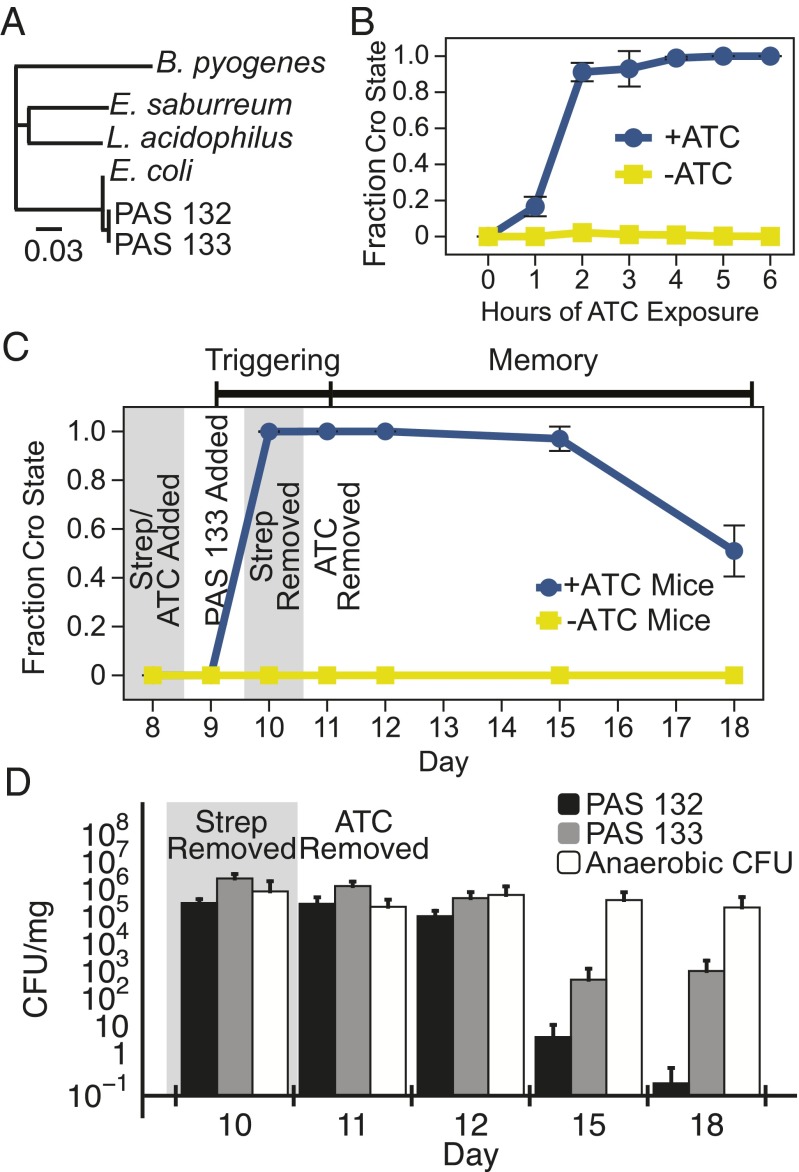Fig. 4.
Memory behavior of an endogenous murine E. coli strain engineered to contain the memory circuit. (A) The 16S ribosomal subunits of PAS132 and PAS133 were sequenced and compared against known gut microbes (46). (B) PAS133 was grown in M9 glucose + casamino acids liquid medium +ATC (100 ng/mL), or −ATC for 0–6 h. PAS133 was unable to grow in M9 glucose media without casamino acids. Aliquots were titered hourly on MacConkey Lactose plates to evaluate switching from the cI state to the cro state in response to ATC (means ± SD of three independent samples). (C) PAS133 was administered by oral gavage to mice exposed to antibiotics, and gut flora were characterized following the same protocol as in Fig. 3. On day 11 the ATC was removed from the cage (means ± SD from four mice). (D) Comparison of survival of PAS133 and PAS132, engineered E. coli K12 in the mouse gut. Shown are PAS132, PAS133, and anaerobic gut flora CFU per milligram of fecal sample on corresponding days (means ± SD from eight mice).

